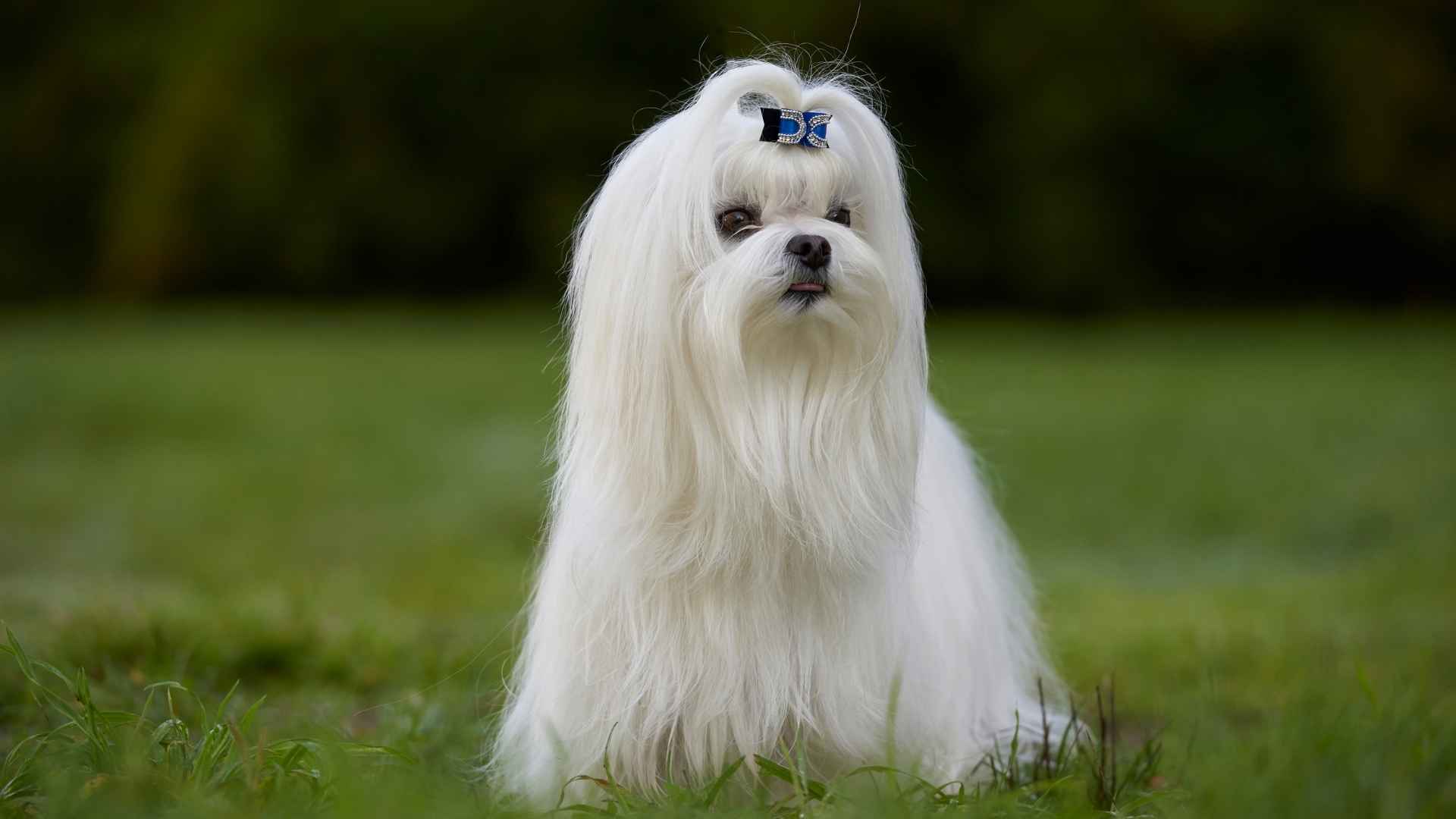If you’re a dog lover but sensitive to strong pet smells, you’re not alone. While all dogs have a natural scent, some breeds are noticeably less odorous than others. Factors like coat type, grooming habits, skin health, diet, and genetics play a huge role in how a dog smells. With proper hygiene and nutrition, even the most playful pups can maintain a fresh, clean aroma, making them ideal companions for those who value a low-odor household.
It’s worth noting that a dog’s odor isn’t just about how often they bathe. Bathing too frequently can strip essential oils from their coat, leading to skin issues and even more odor over time. Dogs that enjoy romping through mud or swimming will need timely cleanups, but breeds with odorless coats naturally stay fresher longer. Their grooming needs may be simpler, and they’re less likely to carry a “wet dog” smell after a walk in the rain.
In this article, we’ll explore dog breeds with odorless or minimally smelly coats—perfect for neat freaks, apartment dwellers, or anyone who appreciates a clean-smelling companion. Whether you’re dealing with skin allergies or just want a fresher living space, these breeds might be the right fit for your lifestyle.
Dog Breeds With Odorless Coats
1. Poodle
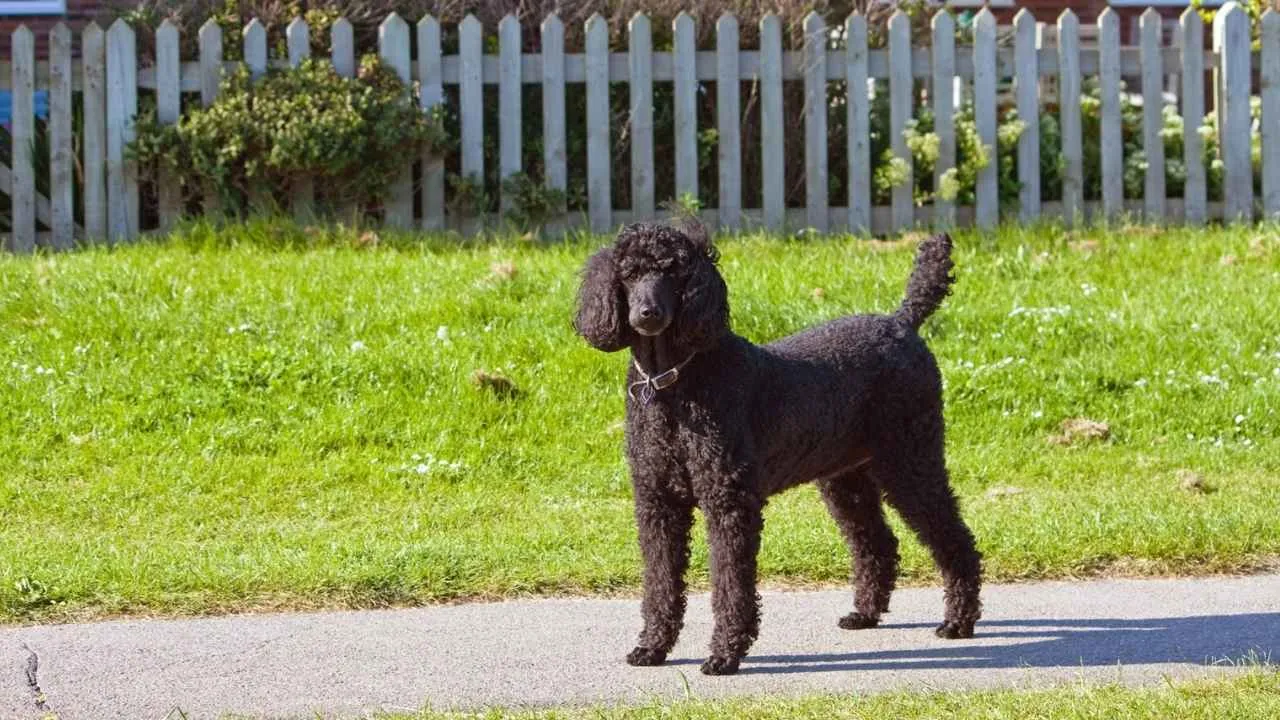
Recognized for its curly, non-shedding coat and regal appearance, the Poodle—also known as Caniche or Pudle—offers far more than just good looks. A hypoallergenic favorite, Poodles come in three size varieties: Standard (over 15 inches tall), Miniature (15 inches or under), and Toy (up to 10 inches tall).
They typically weigh between 4 to 70 pounds, depending on the type. This breed is part of the Non-Sporting Group and has a life expectancy of 10 to 18 years. According to the American Kennel Club (AKC), the Standard Poodle is a highly intelligent and energetic breed.
Bred originally in Germany for water retrieving, Poodles excel in intelligence, athleticism, and trainability. Their tight curls help repel dirt and trap less dander, which makes them among the least odorous dog breeds.
Care Needs
Poodles require consistent grooming to maintain their odorless reputation. Daily brushing helps avoid matting and distributes natural oils, while professional grooming every 4–6 weeks keeps their coat in shape.
Their minimal shedding and low dander output reduce household allergens. Regular vet visits are essential to check for dental and skin issues, both of which could lead to unpleasant smells if neglected. A balanced diet with Omega-3 and 6 fatty acids also supports skin and coat health.
Fun Fact: Poodles are so clean that even when excited, they drool very little.
2. Italian Greyhound
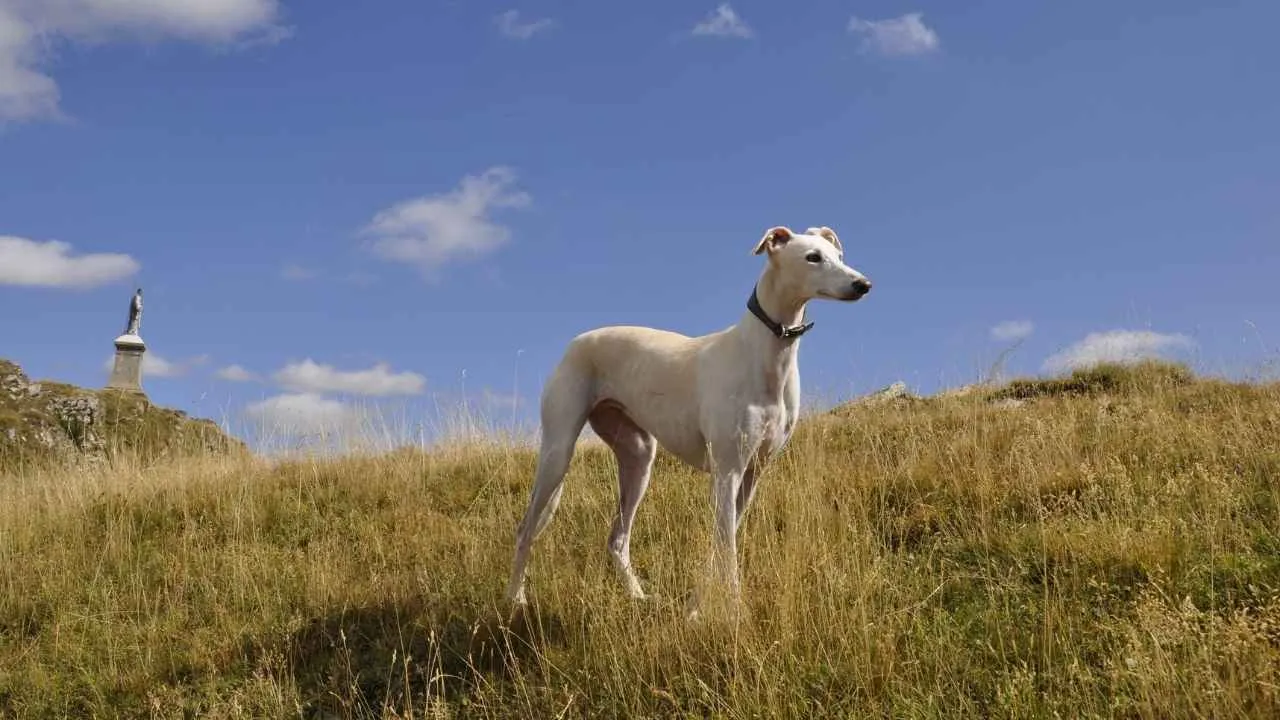
Sleek, stylish, and brimming with elegance, the Italian Greyhound—often called “Iggy” or “IG”—is a toy breed with ancient roots in Roman and Renaissance aristocracy. WebMD states that Italian Greyhounds form close bonds with their people and thrive in a loving home environment.
A true miniature of the standard Greyhound, these dainty companions typically stand 13 to 15 inches tall and weigh between 7 and 14 pounds. Their fine-boned frame and short, smooth coat give them a graceful, statuesque look.
The breed belongs to the Toy Group and is known for its affectionate, playful demeanor and impressive speed, reaching up to 25 miles per hour despite its petite build. With a lifespan of 14 to 15 years, Italian Greyhounds make loyal, long-term companions for the right owner.
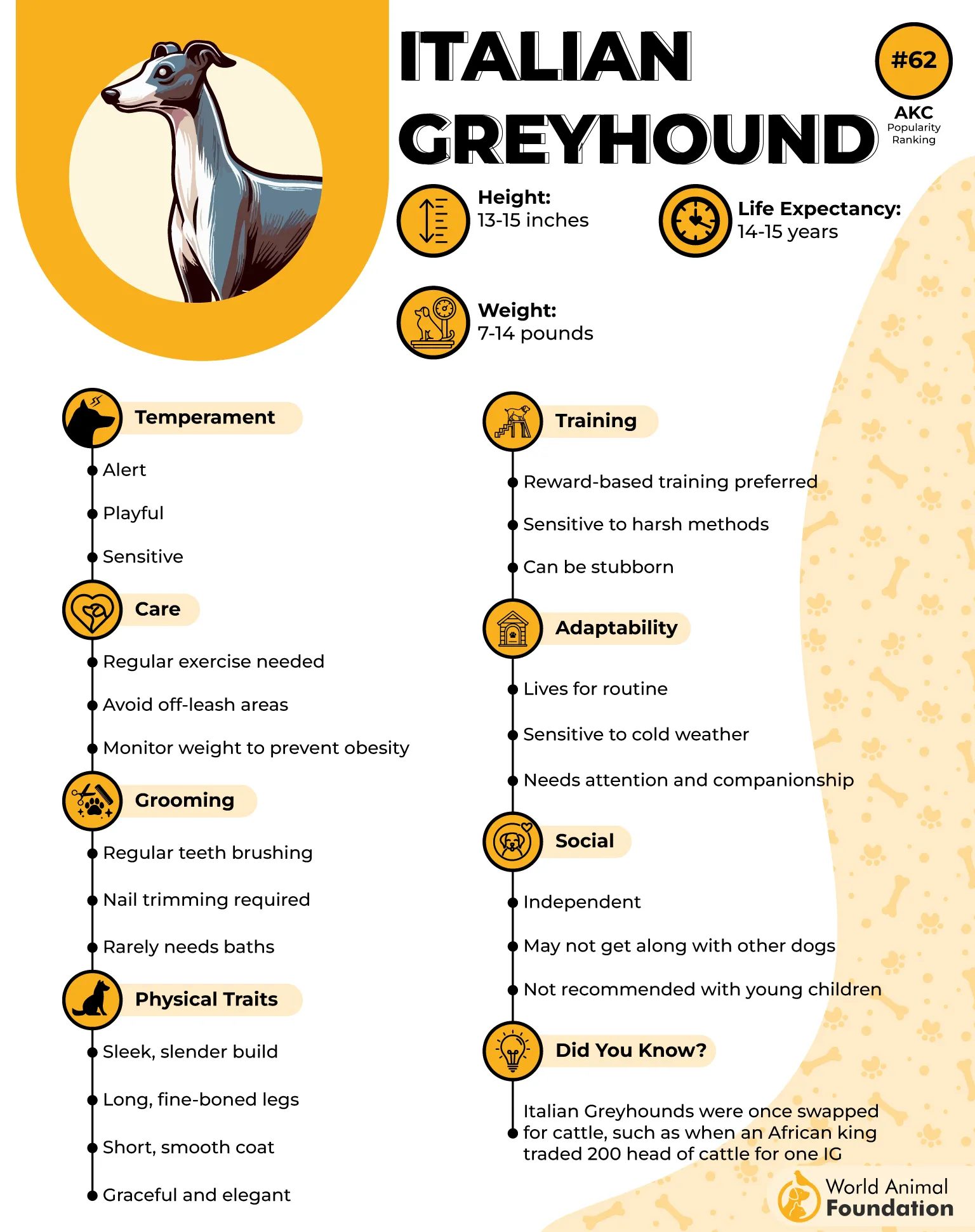
Care Needs
Italian Greyhounds are extremely low-maintenance when it comes to grooming. Their odorless, short coat doesn’t shed much and only requires occasional wiping or a rare bath. They dislike getting dirty and generally avoid mud or puddles.
However, due to their low body fat and thin coat, they’re sensitive to cold weather and may need a sweater during chilly walks. Vet checkups should include dental care, as they can be prone to dental issues. Ear cleaning and nail trimming should be part of a regular routine.
Fun Fact: Italian Greyhounds rarely drool and are often described as “self-cleaning” dogs.
3. Maltese
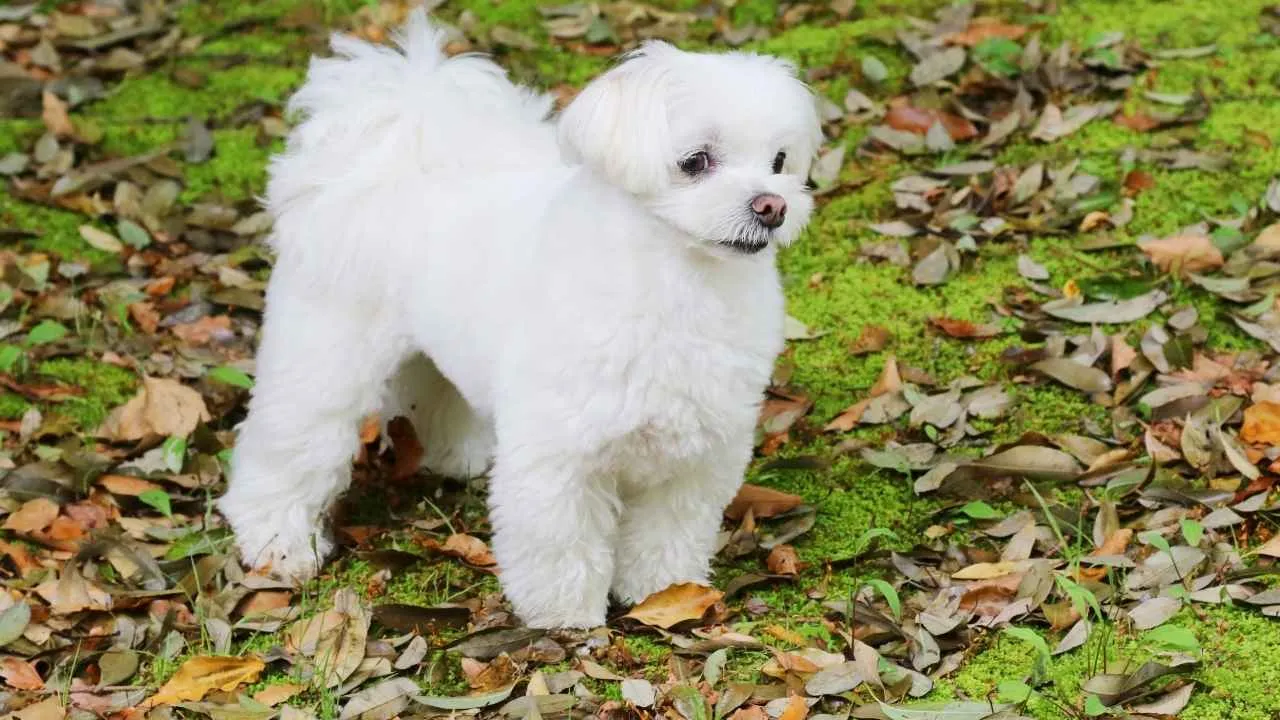
The Maltese, often called the “Ye Ancient Dogge of Malta,” is a centuries-old toy breed originating from the Mediterranean region. Known for its luxurious, floor-length white coat and lively disposition, the Maltese typically weighs under 7 pounds and stands about 7 to 9 inches tall.
With their charming dark eyes and button-like black nose, they’re both regal and endearing in appearance. Despite their small size, these dogs can be spirited watchdogs with an alert and fearless nature.
Classified in the Toy Group, the Maltese has a lifespan of 12 to 15 years and is considered hypoallergenic due to its low-shedding coat. Britannica notes that while Maltese dogs are energetic, their exercise needs are modest and can easily be fulfilled in a small yard, house, or even an apartment.
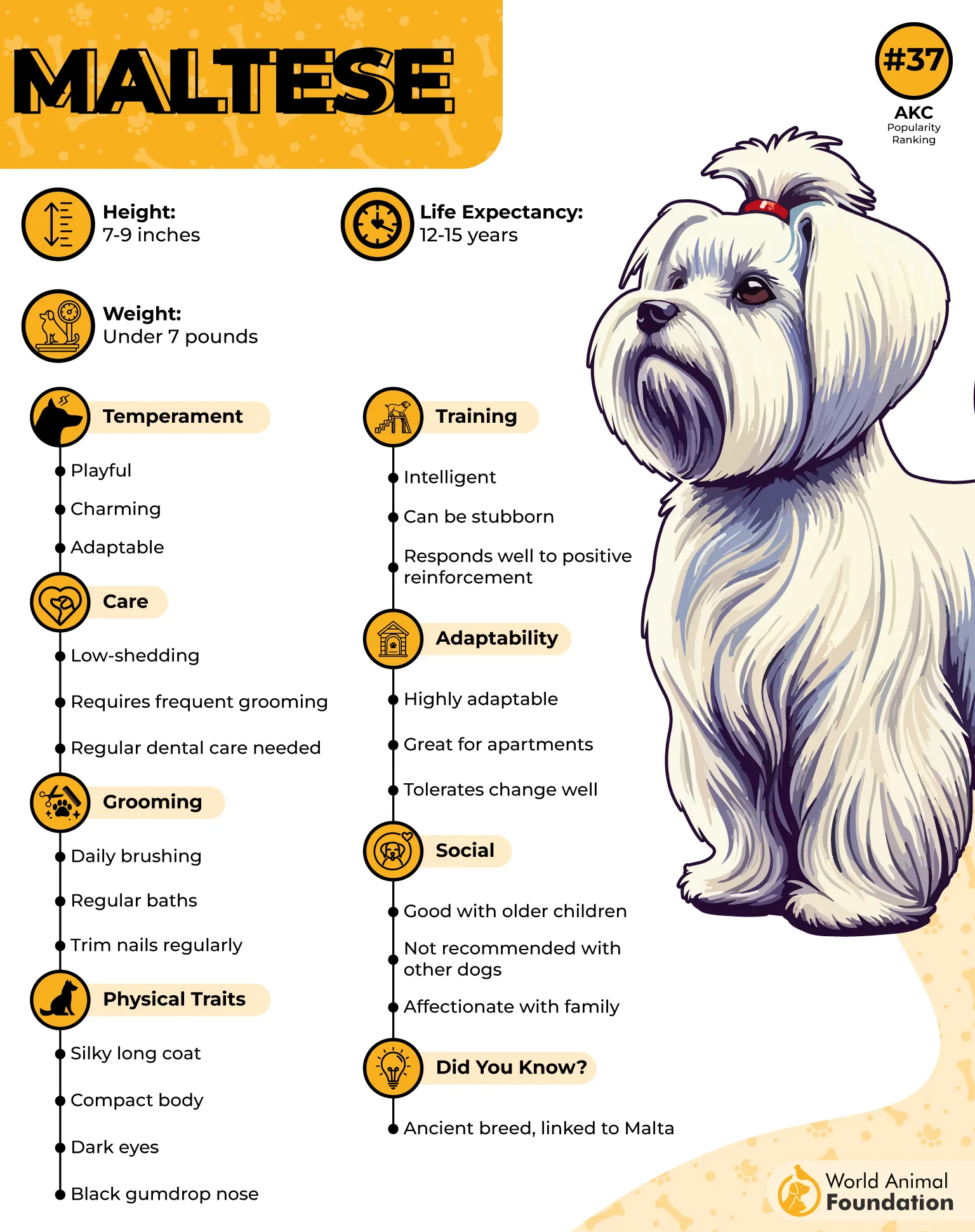
Care Needs
Though the Maltese boasts an odorless and non-shedding coat, it does require daily grooming to maintain its pristine appearance. Gentle brushing of the skin prevents tangles and mats, while regular combing helps distribute oils and reduce dirt buildup. Their nails grow quickly and should be trimmed often, and oral hygiene should not be neglected.
Routine baths and regular vet visits help prevent issues like skin infections or dental disease that could contribute to odor. For indoor dwellers in apartments or city homes, a clean, consistent grooming routine makes the Maltese a low-maintenance yet elegant choice.
Fact: Maltese dogs are one of the few long-coated breeds that naturally emit very little doggy odor when properly groomed.
4. Portuguese Water Dog
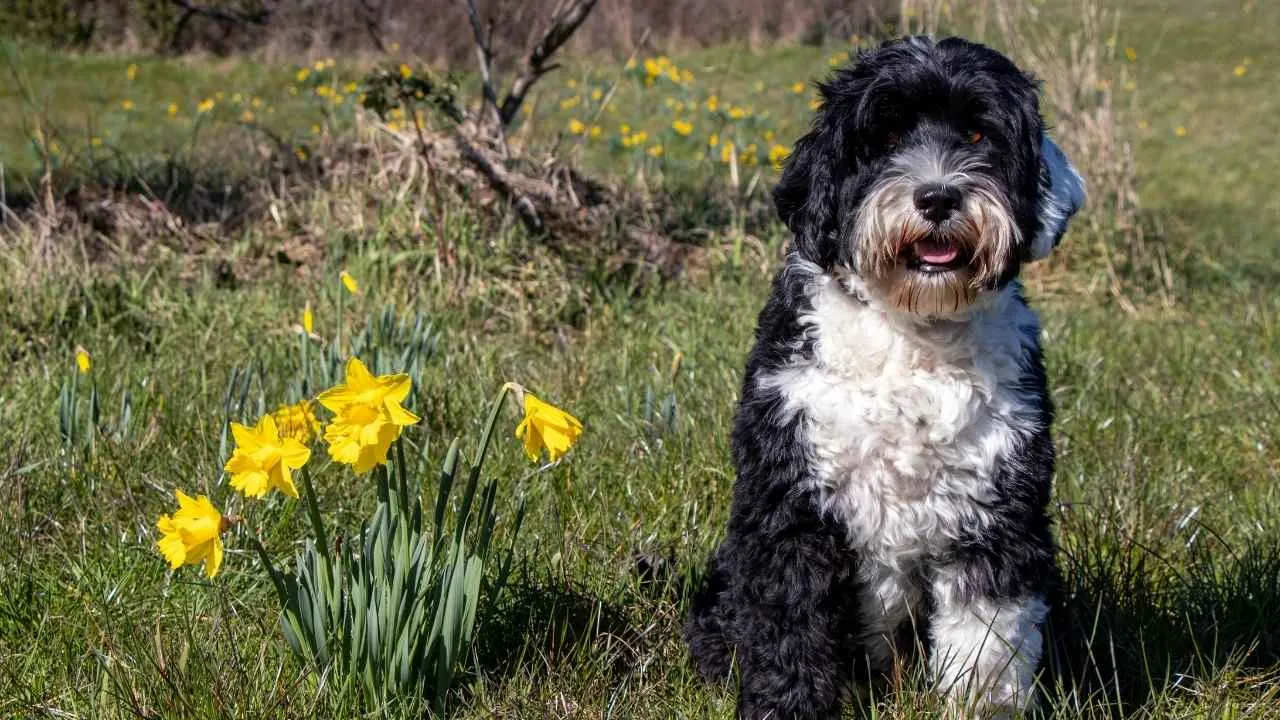
Also known as “Porties” or PWDs, the Portuguese Water Dog is a medium-sized, robust working breed with deep roots in Portuguese maritime tradition. Originally bred to assist fishermen by retrieving nets and herding fish into traps, this athletic and water-loving breed boasts webbed feet, remarkable stamina, and an enthusiastic personality.
Standing about 17–23 inches tall and weighing between 35–60 pounds, the breed features a dense, curly or wavy, water-resistant coat that is low-shedding and hypoallergenic.
The coat is not only practical in the water but also helps minimize odor, setting this breed apart from many other working dogs. With a life expectancy of 11–13 years, the PWD is part of the Working Group and thrives on routine, purpose, and companionship.
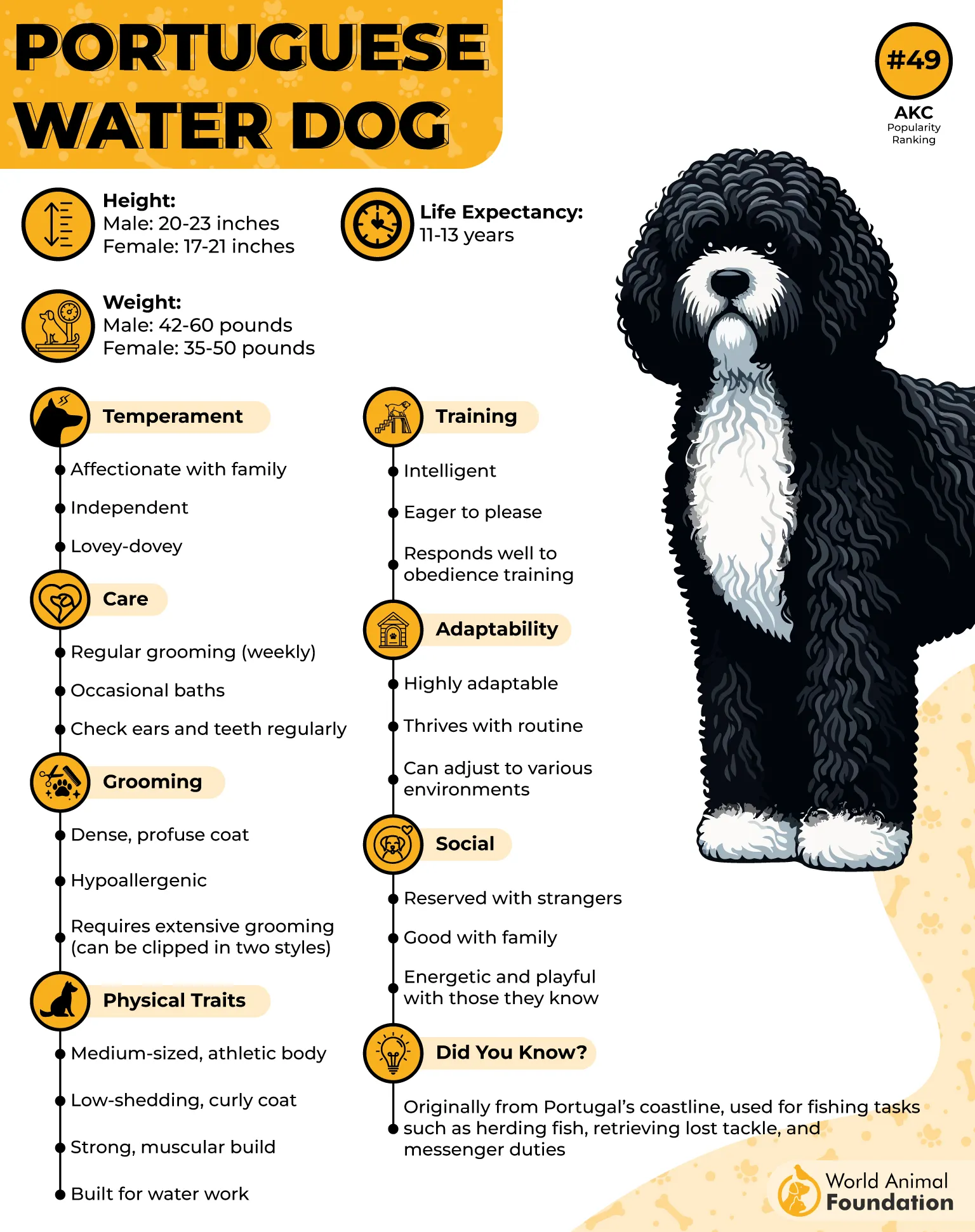
Care Needs
Portuguese Water Dogs are relatively low in odor thanks to their minimal shedding and waterproof coat, but they require consistent grooming to maintain cleanliness. Brushing several times a week with a de-shedding comb prevents matting and helps distribute natural oils.
Due to their energetic nature, PWDs need daily physical and mental exercise—ideally 30 to 60 minutes. Regular ear cleaning, dental hygiene, and vet checkups further reduce the chance of odor from infections or poor health.
Fun Fact: Portuguese Water Dogs were used as courier dogs by the Portuguese Navy in the early 20th century.
5. Schnauzer
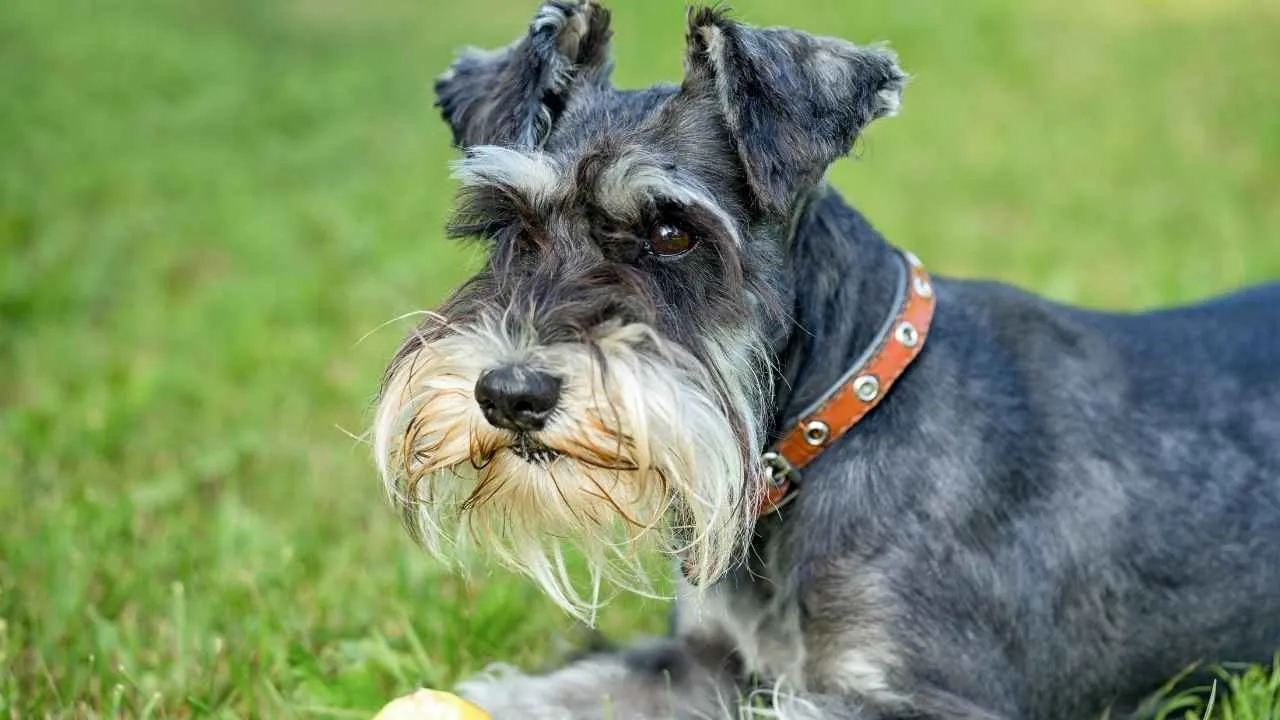
Recognized for their iconic bushy eyebrows and dignified beards, Schnauzers come in three sizes—Miniature, Standard, and Giant—but all share one impressive trait: an odorless, wiry double coat. Originating in Germany, Schnauzers were bred as versatile farm dogs and ratters, combining intelligence, loyalty, and a bold personality.
Miniature Schnauzers stand 12–14 inches tall and weigh 11–20 pounds, making them ideal for apartment living. Despite their rustic appearance, their coat is remarkably low-shedding and naturally resistant to dirt and oil buildup, reducing unpleasant doggy odor.
Bright, spirited, and clean by nature, Schnauzers are a top pick for dog allergy-sensitive households. Their expressive faces and alert demeanor make them both lovable companions and reliable watchdogs.
Care Needs
These loyal dogs need regular grooming to maintain their low-odor coat. Their wiry outer coat requires brushing several times a week and professional trimming every 4–6 weeks to prevent matting.
They enjoy daily walks and mental stimulation to curb boredom and remain well-mannered indoors. Routine vet visits, proper dental care, and ear checks help sustain their hygiene and fresh scent.
Fun Fact: Schnauzers are one of the few breeds known to groom their own beards with their paws, making them surprisingly tidy pups.
6. Havanese
Charming and full of charisma, the Havanese—also called the Havana Silk Dog—is the only dog breed native to Cuba. Known for its spirited demeanor and affectionate nature, this breed belongs to the Toy Group and typically weighs 7–13 pounds, standing 8.5–11.5 inches tall.
With a lifespan of 14–16 years, the Havanese has a soft, silky double coat that comes in a wide range of colors and is less oily, which contributes to its low odor.
A curled-over tail and expressive eyes further highlight its adorable appearance. Despite their glamorous coat, Havanese dogs do not shed excessively and are among the breeds least likely to develop the “doggy smell.”
Care Needs
The Havanese’s odorless reputation can be preserved with consistent grooming. Their long coat—whether straight or wavy—requires daily brushing to prevent matting. While they don’t need frequent baths, an occasional bath every few months or after active outdoor play helps keep their skin and coat fresh.
Regular vet visits are crucial to avoid odor caused by infections in the ears, skin, or anal glands. Moderate daily exercise, such as short walks or playtime, helps keep them mentally and physically fit. A short haircut can make maintenance easier for busy owners.
Fun Fact: The Havanese are often described as having the comic instincts of a born clown.
7. Yorkshire Terrier
The Yorkshire Terrier, affectionately known as the “Yorkie,” is a compact toy breed renowned for its elegance and charm. Originally bred in 19th-century England for catching rats in textile mills, this feisty little dog has since become a popular companion worldwide.
Yorkies typically weigh no more than 7 pounds and stand about 7 to 8 inches tall. Their most striking feature is their long, silky, floor-length coat, which closely resembles human hair, making it ideal for those seeking an odorless pet. They are part of the Toy Group and enjoy a life span of around 11 to 15 years.
Care Needs
Despite their low-odor reputation, Yorkshire Terriers require attentive grooming. Their fine, human-like hair doesn’t trap odor or dander, but it does demand regular care. Daily brushing helps prevent tangles and distributes natural oils evenly.
Professional grooming every few weeks is also essential to maintain their coat’s sleek appearance. They are sensitive to cold and may need protective clothing during chilly months. Regular vet visits are necessary to monitor dental health, ears, and skin, which are common trouble spots for odor if neglected.
Fun Fact: Yorkies don’t drool much and their coats are hypoallergenic, making them one of the best options for an allergic person.
8. Bichon Frise
With roots tracing back to Mediterranean lapdogs, the Bichon Frise—also known as the Tenerife Bichon—is a small, cheerful companion that has long charmed dog lovers with its cotton-ball appearance. Classified under the Non-Sporting Group, this breed typically stands under 12 inches tall and weighs between 10–20 pounds.
Their hypoallergenic double coat is plush and velvety, contributing to their nearly odorless nature. The hallmark feature is the rounded head framed by fluffy white fur, accentuating dark, expressive eyes. Known for their vivacious personality, Bichons are friendly, adaptable, and intelligent—traits that made them favorites of royalty and circus performers alike.
Care Needs
These furry friends require consistent grooming to maintain their odorless and mat-free coats. Regular brushing, at least 2–3 times a week, helps prevent tangling and distributes natural oils. While they don’t shed, their dense coat traps loose hair, necessitating trimming every few weeks. Bathing should be done monthly or as needed to retain freshness.
Owners should also monitor for tear staining and keep ears clean to avoid infections that could cause odor. Despite their elegant look, Bichons are quite playful and need moderate daily activity to stay happy and healthy.
Fun fact: Bichon Frises are often called the “Fragrant Princess” of the dog world due to their naturally clean, scent-free bodies..
9. Basenji
The Basenji, often called the “Barkless Dog,” is a small and elegant breed with a unique voice that resembles a yodel rather than a typical bark. Originating from Central Africa, this ancient hound was bred for hunting and is known for its intelligence, independence, and feline-like grooming habits.
Recognized by the American Kennel Club in 1943, Basenjis typically stand 16–17 inches tall and weigh 20–26 pounds. They have a sleek, short coat, a tightly curled tail, and expressive, almond-shaped eyes.
Their coat comes in various colors, including red and white, black and white, and brindle. One of their standout traits is their minimal body odor, thanks to low oil production and self-cleaning tendencies.
Care Needs
Basenjis are remarkably low-maintenance when it comes to grooming. They shed lightly and require only occasional brushing to maintain their glossy coat.
Bathing every 4–6 weeks is sufficient, as overbathing can strip their natural oils. While they don’t drool or smell much, they do need regular exercise—about 60–90 minutes daily—to stay mentally and physically stimulated.
Fun Fact: Basenjis groom themselves much like cats, contributing to their reputation as one of the cleanest dog breeds.
Conclusion
Choosing a dog with an odorless coat can make a world of difference in maintaining a fresh, pleasant-smelling home, especially for those sensitive to pet odors or pet dander. While most dogs may develop an occasional scent, certain dog breeds naturally resist unpleasant smells due to their coat texture, oil levels, or grooming behaviors. Breeds with short hair, curly coats, or silky hair tend to carry less odor, and some, like the Kerry Blue Terrier or West Highland Terrier, are renowned among the least smelly dog breeds. Regular brushing, use of mild shampoo, and keeping your dog’s ears dry help prevent issues like ear infections, which can cause bad odors in even the cleanest dogs.
Even breeds like Labrador Retrievers and Golden Retrievers, though sometimes considered smelly dog breeds, can smell fresh with proper care. Many chief veterinary officers advise, using coat-friendly grooming products and understanding your pet’s unique coat type are key to reducing odor. While other breeds may require extra attention, these odorless dog breeds are perfect for owners who value cleanliness and comfort without sacrificing companionship.


